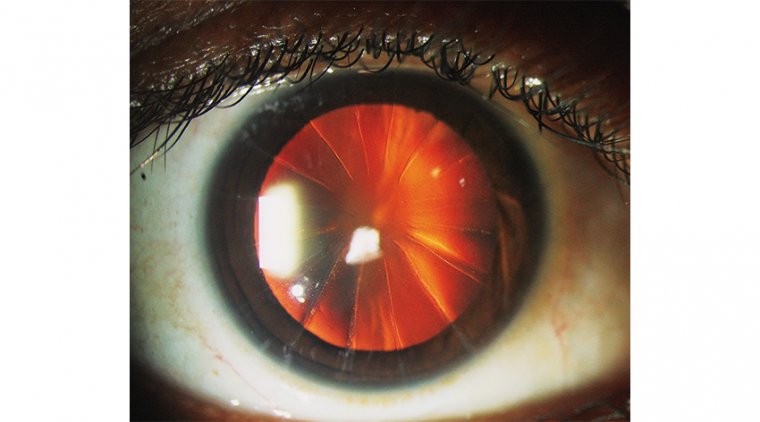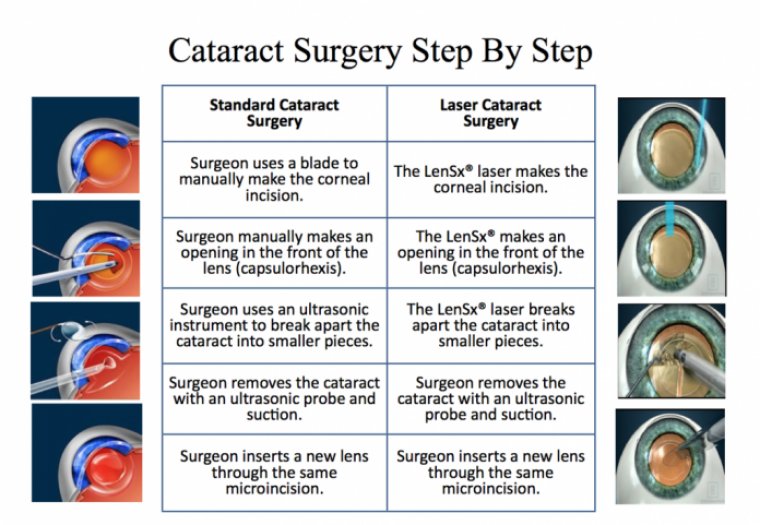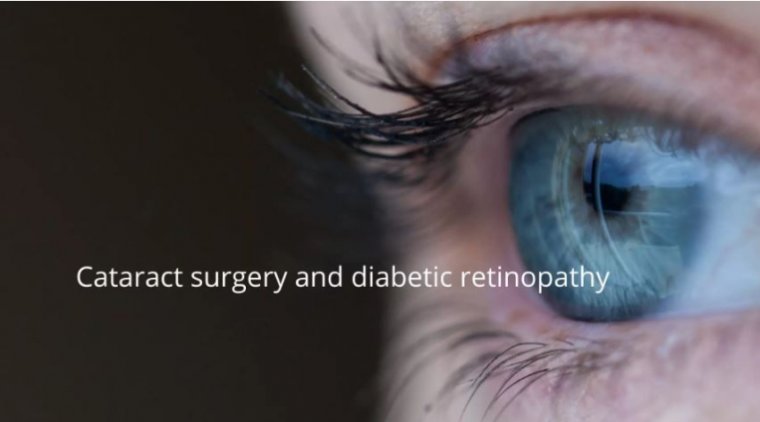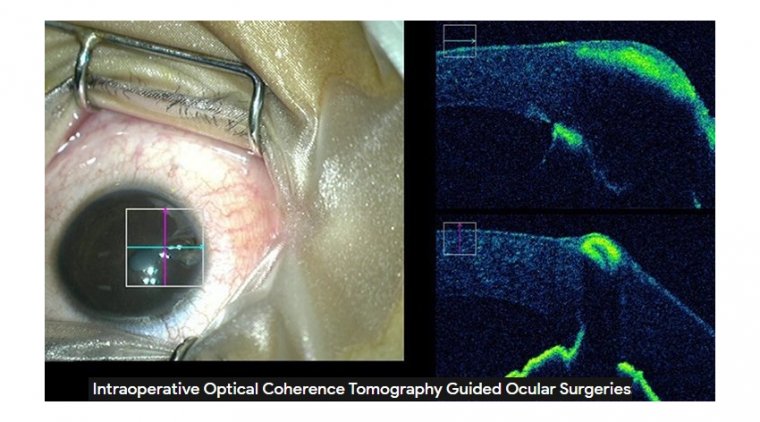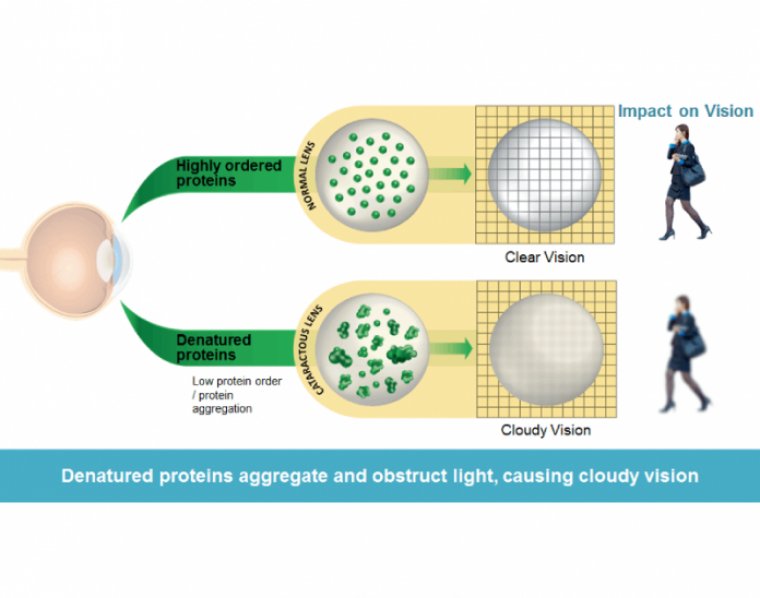
Cataracts & Protein Imbalance
The human eye lens exhibits many biochemical properties that are unique amongst the tissues of the body. The dual requirements of high transparency and high refractive index necessitate a high protein concentration.
This makes the lens highly dependent on the stability of the crystallins in maintaining its function and makes the lens very vulnerable to diseases of aging. The tendency for age-related damage to accumulate in the lens means that cataract is an inevitability for most individuals, especially as lifespans increase.
Cataract is the result of protein misfolding. Over time, proteins are subject to a wide range of post-translational modifications that can reduce their stability and promote aggregation.
The crystallin proteins of the lens are particularly long-lived and any age-related damage they suffer typically accumulates. Cataract occurs when these proteins aggregate into large bodies which cause light scattering and loss of visual acuity.
While the lens has systems to prevent protein aggregation (Ecroyd and Carver 2009; Horwitz 2003), the build-up of damaging modifications over time will eventually overwhelm them and aggregate formation results.
The eye lens is a unique tissue, as its proteins are not degraded over a lifetime. The oldest lens pro-teins are formed early during embryonic development. Moreover, the protein content of the vertebrate lens is exceptionally high.
It contains up to 450 milligrams per milliliter protein3, similar to the concentrations found in protein crystals.
About 90% of the lens proteins are members of the α-, β-, and γ-crystallin families. In most mammals, these crystallin proteins are encoded by 16 genes, and numerous mutations have been identified in these isoforms that are causative for congenital cataracts.
As there is no general protein turnover in the eye lens, damaged proteins will accumulate during aging. In hereditary cataracts, the situation is thought to be aggravated by the aggregation of conformationally destabilized crystallin variants, including the formation of amyloid-like structures that impair vision at an early age.
The New Study
Also according to a latest study, the composition of the protein solution in the lens of the eyes may be responsible for the formation of cataracts.
Cataracts are the most common eye ailment in humans and it is a slowly progressing condition that causes a clouding of the lens of the eyes. It can happen to just one eye or both simultaneously. The most obvious sign of this condition is a blurry vision, almost like looking through a dirty window.
Other symptoms are double vision, not being able to measure the brightness of colours, halos around lights, difficulty when faced with bright lights and difficulty with night vision.
This is a very common problem that crops up usually when the age is around 50s or 60s, though it can also happen at any age. Till date, experts have been unable to explain exactly why this condition occurs.
Although the majority of cataracts are due to the aging process, children can be born with the condition as a result of an inherited genetic condition, or a cataract may develop as a result of a medical condition such as diabetes, other eye diseases, injuries, or past eye surgery such as vitrectomy.
But now, a team of researchers from the Technical University of Munich (TUM) say that the composition of the protein solution in the lens of the eyes may play a decisive role in the formation of this condition.
The cells in the lens consist of a highly concentrated protein solution that is normally clear. When the balance of the proteins in the lens of the eyes is destroyed, they tend to clump together and the lens becomes cloudy.
These clumps gradually enlarge and interfere with vision by distorting or blocking the passage of light through the lens. This results in the condition known as cataracts.
As a result, the lens become cloudy. According to researchers, this results in the condition known as cataract. Their findings of this study are in contradiction to the opinions held by experts regarding the same.
Protein In Lens Cannot Be Replaced Or Rebuilt
There may be many causes behind this clouding of the lens. But one truth is that these lens proteins are formed in the embryo and are not replaced ever. Hence, the damage to them can actually accumulate over the years and this will ultimately cause the lens to cloud over.
This is one of the main reasons why we see this condition mainly in older people. But then, some people may have a genetic predisposition to this eye condition, causing the proteins in the lens to mutate. In such cases, cataracts are present at the time of birth or appear during childhood. But these cases are not as common as adult onset cataract.
Defective Proteins Are Eliminated Whereas Healthy Proteins Clump Together
For the purpose of the study, researchers studied hereditary cataracts in mice. Until now, researchers of earlier studies said that only the defective proteins in the eye were reacting with one another and forming clumps.
But the current study says that this is not the case. Researchers of the study being discussed here discovered that the mutated, unstable proteins in the lens were not there. It was as if they were eliminated immediately.
Instead, they were surprised to find that ‘healthy’ proteins clump together. Based on these findings, the researchers came to the conclusion that the balance between the various proteins, or their ratios to one another, is important and when one of these components go missing, the remaining ones interact and form clumps.



